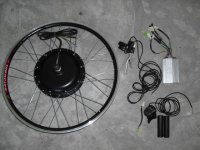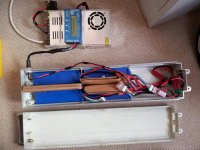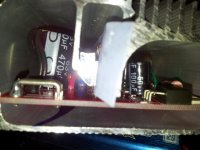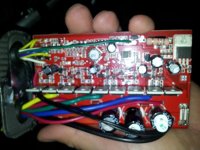monkeychops
100 W
Hello all.
I have one of these:

from cellman.
It's a 500W MXUS Direct Drive hub (XF40 I think).
It's ace. Top speed is 25mph on the flat with 48V of lipos powering it.
Inevitably I want a few more mph in my pocket, for 'occasional use' on 'safe' roads. Only 2 - 3 more mph you understand
I wondered about reconfiguring my batteries to output say 66V (I currently have 8 6S lipos giving 44V nominal).
So...... would 66V likely break my controller? Or break the motor? I don't have any significant hills on my usual commute. Would I need to open up the controller and see what the capacitors are rated at (or something like that?) Maybe buy an upgraded controller? Are they easy to swap in and out?
I have one of these:

from cellman.
It's a 500W MXUS Direct Drive hub (XF40 I think).
It's ace. Top speed is 25mph on the flat with 48V of lipos powering it.
Inevitably I want a few more mph in my pocket, for 'occasional use' on 'safe' roads. Only 2 - 3 more mph you understand
I wondered about reconfiguring my batteries to output say 66V (I currently have 8 6S lipos giving 44V nominal).
So...... would 66V likely break my controller? Or break the motor? I don't have any significant hills on my usual commute. Would I need to open up the controller and see what the capacitors are rated at (or something like that?) Maybe buy an upgraded controller? Are they easy to swap in and out?







